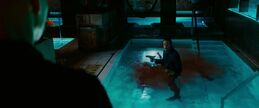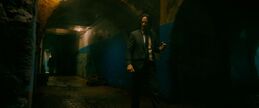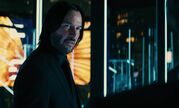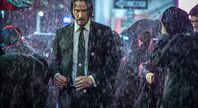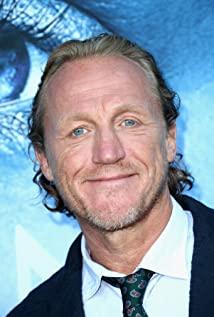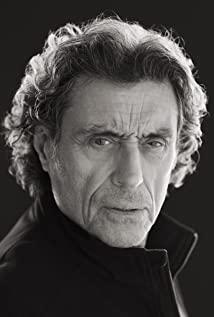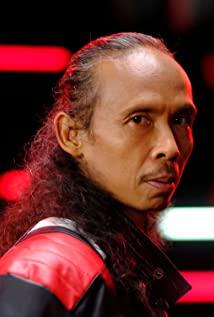The experience of watching Keanu Reeves's "Fast" trilogy is like saying hello to an old friend we haven't met for a long time: the characters, plot, visual elements and action arrangement we see in the film all seem to have been dusty for a long time Walking out from the pile of film history papers, waving to the audience. Of course, we can also think of this as old wine poured into a repackaged and beautified wine bottle, and it tastes full of new flavor and fragrance.
1
When John Wake appeared for the first time in 2014's "Quick Hunting", we all thought he was just a lone wolf with a highly fragile spirit in modern society-just because the dog was killed, he was "best in nature". In more than 100 minutes, more than 70 opponents were still unable to let go, and finally had to buy another dog to comfort his injured heart. In the second episode of "Quick Attack" in 2017, we found that the killer world he was in was completely beyond reality, and its internal operation logic turned out to be based on Jin Yong’s ancient dragon novels and the countless Shaw Brothers in the 1970s. The world of knights in costume films is portrayed. And when the legendary experience of John Wake was passed on by word of mouth in the film, we seemed to feel that he had surpassed his identity as a retired killer and became Ximen Fuxue, the sword-man united in "Legend of Lu Xiaofeng". When the martial arts leader-style "High Table" issued an order to kill him in the third episode of "Prepare for War", the plot of the various gangs ready to compete against each other directly fell into the martial arts world of Chu Liuxiang and Lu Xiaofeng. The difference was only It's just that they are wearing suits in the film.
It is said that Keanu Reeves is a fan of Kung Fu. He not only wrote, directed, acted and invested in Tai Chi Xia two years before practicing martial arts. We don’t know how many martial arts kung fu movies he and other creators watched when setting up the worldview of this trilogy, but what makes people’s eyes shine is that the "Quick Speed" series has restored the silence in an unexpected new form. Twenty years of Hong Kong martial arts film text core. In particular, the main plot structure of the protagonist's bloody way of killing a way out with a severed limb and headshot really reminds us of Wang Yu, Ti Lung and Jiang David in Zhang Che's movie decades ago in the blood-splattered journey. Burst scenes with hundreds of unknown opponents.
Unlike the American Marvel and DC action movies that are raging on the screen, the "Fast" series implements the core spirit of martial arts/kung fu movies. It throws away the tasteless, dry routines of emotional dramas interspersed in Hollywood action movies, builds a single core support film structure with a stubborn persistence, and uses lone heroes to violently spray and expressive "beat" and " "Kill" to replicate the very traditional sensory film model in essence to attract audiences.
2
Whether it is a kung fu movie or a martial arts movie, the success or failure of the "fight" is the key to its success. In the ten years before the "Quick" series, many people tried to resurrect the soul of Hong Kong-style action movies in various ways, but the reason for the ultimate failure was nothing more than "fighting" no more unique routines. . It was at this point that the "Fast" series racked their brains to come up with new tricks that they had never had before.
In a nightclub massacre in the middle of "Quick Pursuit", although John Wake and his opponents held pistols in most of them, they did not hide behind the cover and fire at long distances. Everyone seems to have adopted the most inefficient matchup: getting close to each other and fighting each other physically, and finally using a pistol to make up for the knife. The "gun", a modern weapon that can let people get rid of physical violence, has been cancelled in the "Rapid" series, and has become a "cold weapon" with a very limited effective attack distance. As a result, the spectacle of close-up headshots of neutron bullets refreshed the old effect of the iron warfare of swords, guns, swords, and swords, and the film’s main creators reorganized the structure and rhythm of the action routines using this as the main axis to create a brand new one. The visual effect of the physical battle: It has a small range of movement, but it can still splash with blood plasma quickly and quickly. The rhythm of the fast movement can even be interestingly changed with the change of the magazine as the node.
This whimsical idea of using "guns" as cold weapons is vividly reflected in the motorcycle chase of the bridge in "Prepare for War". A group of murderers armed with machetes and John Wake with guns are chasing at high speed by motorcycles. The confrontation between you and me is actually between the sword and the bullet flying across. They seemed to be riding on war horses to kill each other on the battlefield, and the howling bullet seemed to be almost tied with the dazzling white blade at close range. In addition to lamenting the amazing imagination of action designers, interested people will also notice that they have inherited the essence of the exaggerated and visualized action arrangement in Hong Kong action movies (unfortunately, we did not expect the sword and the Bullets can fight in such a sharp way).
Action movies are not just the action itself, it also includes various supporting facilities such as space design, use of props, scene scheduling, and editing ideas. For example, in order to give rationality to the firearms and cold weapon-style close combat, the "Fast" series draws on the concept of scene space design from traditional kung fu martial arts films: it sets most of the fighting/shooting scenes inside narrow buildings, ballrooms , Corridors, underground passages, washrooms, even under the surface of the swimming pool, etc. The limitation of internal space effectively compressed the fighting distance between people, making the combination of shooting and physical collision clear and reasonable. For another example, martial arts movies and kung fu movies pay great attention to the invention and use of novel props: the nunchakus first used by Bruce Lee, or the golden knife lock exclusively invented by Zhang Che, have been impressive on the screen for a long time. In "Prepare for War", not only conventional cold weapons such as knives, swords, axes, daggers, etc., are repeatedly used, even broken glass ballast, John Wake's belt, and books in the library are used as murder weapons. Even the horseshoe is used by the protagonist to defeat the opponent. From the aggressive use of all kinds of props, we can also see the true story of this movie that has won the kung fu movie.
Finally, and the most admirable point: in the use of movie scene scheduling and editing skills, the "Fast" series completely restores the essence of the golden age Hong Kong-style action film "segmented continuous shooting": it will fight scenes Divide it into several continuous parts, shoot each segment separately with different camera positions, scenes and angles, and finally connect it in series to form a complete fight in the editing. Domestic martial arts film and television works and various Hollywood action fantasy blockbusters have used "construction editing" too frequently to combine an action scene: it omits most of the action content, and links several action node screens to form a fighting scene. It can not only create spectacle movements with fantasy in the audience's imagination, but also hide the awkwardness of the actors' lack of physical ability.
The creators of "Fast" are obviously not cold about such "lazy and slippery", they have consciously erased the lack of realism brought by the construction of editing. In the final battle at the Continental Hotel in "Quick Preparation", the director preferred to keep the actors (especially Keanu Reeves) slightly clumsy and slow and lack dexterity, and insisted on using segmented continuous shooting to present the action. The real power of the scene, combined with the cold weapon use of firearms, brings a brand new visual sensory experience.
Jackie Chan was once asked by reporters why Hollywood no longer invites Hong Kong martial arts directors to make films. He replied: Because they have learned all the methods we invented, they are even better than us. We have to ask them in turn. Judging from the action arrangement and scene scheduling design of the "Rapid" trilogy, Jackie Chan's ability to learn, digest and create American films is actually insincerely admired.
3
"Prepare for War" is particularly outstanding in the commercial film market this summer. In the ranks of visual effects and fantasy blockbusters, it splits a commercial movie path with its cool, simple and extremely violent B-level film style: we all think that pure action movies with simple minds and well-developed limbs have come to the cinema. At the end, only big productions with huge investment in star shining have commercial value. But in fact, the film with the charm of action and the posture of individual actors as the core performance still has unexpected potential to be tapped. It's not that its brilliance has faded away, but that most film creators are habitually following the trend, and are lazy to use original ideas to use old content to open up new forms of expression.
The "Quick Speed" trilogy uses the sword to slant forward to remind everyone: any inherent form has the possibility of being broken and updated, just like the heroes can sometimes use a pistol in a duel.
View more about John Wick: Chapter 3 - Parabellum reviews



